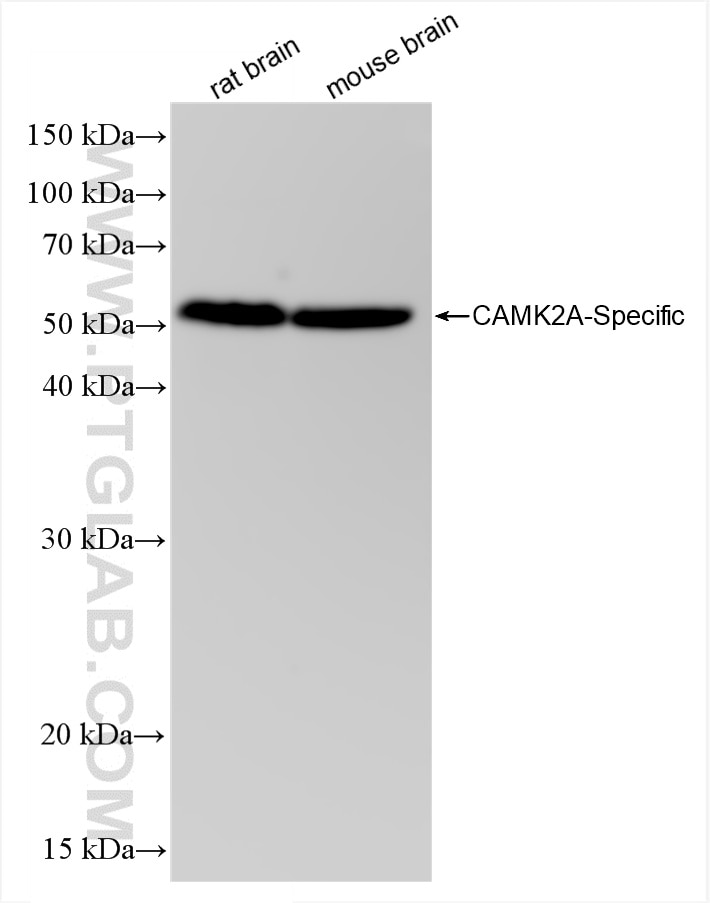Tested Applications
| Positive WB detected in | rat brain tissue, mouse brain tissue |
Recommended dilution
| Application | Dilution |
|---|---|
| Western Blot (WB) | WB : 1:500-1:1000 |
| It is recommended that this reagent should be titrated in each testing system to obtain optimal results. | |
| Sample-dependent, Check data in validation data gallery. | |
Product Information
85197-1-RR targets CAMK2A-Specific in WB, ELISA applications and shows reactivity with human, mouse, rat samples.
| Tested Reactivity | human, mouse, rat |
| Host / Isotype | Rabbit / IgG |
| Class | Recombinant |
| Type | Antibody |
| Immunogen | Peptide Predict reactive species |
| Full Name | calcium/calmodulin-dependent protein kinase II alpha |
| Calculated Molecular Weight | 55 kDa |
| Observed Molecular Weight | 50-55 kDa |
| GenBank Accession Number | NM_015981 |
| Gene Symbol | CaMKII alpha |
| Gene ID (NCBI) | 815 |
| Conjugate | Unconjugated |
| Form | Liquid |
| Purification Method | Protein A purfication |
| UNIPROT ID | Q9UQM7 |
| Storage Buffer | PBS with 0.02% sodium azide and 50% glycerol, pH 7.3. |
| Storage Conditions | Store at -20°C. Stable for one year after shipment. Aliquoting is unnecessary for -20oC storage. 20ul sizes contain 0.1% BSA. |
Background Information
CaMKII alpha, also named CAMKA and KIAA0968, belongs to the protein kinase superfamily, CAMK Ser/Thr protein kinase family, and CaMK subfamily. CaM-kinase II (CAMK2) is a prominent kinase in the central nervous system that may function in long-term potentiation and neurotransmitter release. It is a member of the NMDAR signaling complex in excitatory synapses it may regulate NMDAR-dependent potentiation of the AMPAR and synaptic plasticity. This antibody is specific to CAMK2A.
Protocols
| Product Specific Protocols | |
|---|---|
| WB protocol for CAMK2A-Specific antibody 85197-1-RR | Download protocol |
| Standard Protocols | |
|---|---|
| Click here to view our Standard Protocols |



